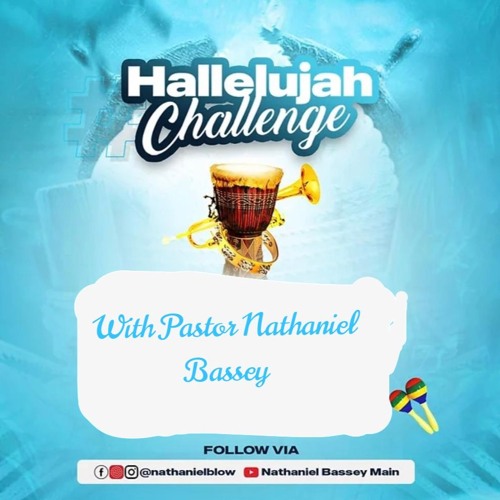In recent years, Nigeria has witnessed a massive shift in how people worship and connect with God.
With the advent of digital platforms, prayer gatherings that once filled church auditoriums have now found a new home online.
From Nathaniel Bassey’s Hallelujah Challenge to Pastor Jerry Eze’s NSPPD and Pastor Femi Lazarus’s Sphere of Light Global, virtual prayer movements are redefining how millions of believers experience fellowship, miracles, and revival.
Read Also: Nathaniel Bassey set to host ‘Kirikiri edition’ of Hallelujah challenge
How do people join these online prayers?
Participation in these prayer movements is surprisingly simple and accessible.
- Hallelujah Challenge: Usually streamed live on Instagram and YouTube, followers join by following Nathaniel Bassey’s official pages and tuning in at the announced time, typically midnight or late evenings. The sessions are filled with worship, praise, and testimonies, lasting around one hour daily throughout the duration of the challenge (often 30 days).
- NSPPD (New Season Prophetic Prayers and Declarations): Led by Pastor Jerry Eze, NSPPD runs every weekday morning at 7 a.m. on YouTube and Facebook. Viewers simply subscribe to his channels and join the livestream.
- Femi Lazarus’s Prayers and Teachings: Pastor Femi Lazarus, founder of Sphere of Light Global, hosts his prayer sessions and teachings across platforms like Mixlr, YouTube, and Facebook.
His broadcasts are often scheduled at specific times, ranging from early mornings to late nights, making them convenient for participants across time zones.
Read Also: Pastor Jerry Eze tops Nigeria’s YouTube earnings for second year
Massive participation: Millions logging in daily
The numbers are staggering.
- NSPPD, for instance, attracts over one million live viewers daily across its digital platforms, sometimes surpassing even international broadcast programs.
- Hallelujah Challenge made headlines when it first went viral in 2017, drawing in over 70,000 live Instagram participants in a single session, a record-breaking feat for an African gospel event online.
- Femi Lazarus’s broadcasts, though not as globally viral, continue to pull tens of thousands of consistent listeners who tune in from Nigeria, Ghana, the U.S., and the U.K.
These figures show not just numbers, but a deep hunger for God and spiritual connection that transcends physical walls.
How long these sessions last
The prayer sessions vary in length, depending on the platform and purpose:
- NSPPD runs for about 1 hour to 1 hour 30 minutes daily.
- Hallelujah Challenge sessions last around 1 hour each night, often throughout a month-long campaign.
- Femi Lazarus’s prayer streams or teachings can range from 1 to 2 hours, depending on the nature of the service.
Despite being virtual, participants testify that the sessions are as intense and impactful as any physical church service, sometimes even more.
Impact on physical church gatherings
The rise of online prayer platforms has undeniably affected traditional church attendance patterns.
Many believers now prefer virtual gatherings where they can worship, pray, and receive teachings from anywhere, at home, at work, or even while commuting.
During the COVID-19 pandemic, when physical gatherings were restricted, these online platforms became a spiritual lifeline.
Even after restrictions were lifted, the habit stuck. People found comfort and flexibility in digital prayer meetings.
However, this doesn’t necessarily mean the decline of physical churches.
Instead, pastors and ministries are now blending online and offline worship experiences, creating a hybrid model that reaches wider audiences. Some churches even report that their physical attendance has increased because people first discovered them online.
Read Also: Apostle Femi Lazarus tops Spotify’s 2024 Nigeria podcasts
Why online prayers appeal to many
- Convenience: People can join from your bedroom or office without the need for travel or dress codes.
- Accessibility: All you need is an internet connection, no church hall is required.
- Community: Comment sections and live chats have become virtual fellowship centers where people encourage one another.
- Testimonies: The flood of miracle stories shared daily motivates new viewers to join.
- Consistency: Regular, short sessions make it easier for busy people to maintain a prayer life.
In essence, these online prayer movements make spirituality more personal, flexible, and connected to modern lifestyles.
A new trend or a quest for attention?
Some critics argue that the rise of online prayer platforms is more about visibility than spirituality, suggesting that pastors may use social media fame to expand influence. Others question the depth of discipleship among online audiences who rarely attend physical fellowships.
Yet, for millions of followers, these platforms are more than just trends, they are real altars of transformation. From healing testimonies to financial breakthroughs, people claim to have encountered God powerfully through their phone screens.
In the words of Pastor Jerry Eze, “What God cannot do does not exist!” a phrase that has become the heartbeat of the NSPPD movement and a declaration of faith for millions worldwide.
Conclusion
The digital age has given rise to a new wave of prayer revival in Nigeria.
Whether it’s Nathaniel Bassey’s Hallelujah Challenge, Jerry Eze’s NSPPD, or Femi Lazarus’s Sphere of Light Global, one thing is certain, the way people pray has changed forever.
While the church building remains sacred, the screen has become a new altar, proving that faith is not confined by walls but fueled by connection, consistency, and conviction.
This piece does not reflect the view of The New Daily Prime. It is an article solely written from the writer’s perspective.



